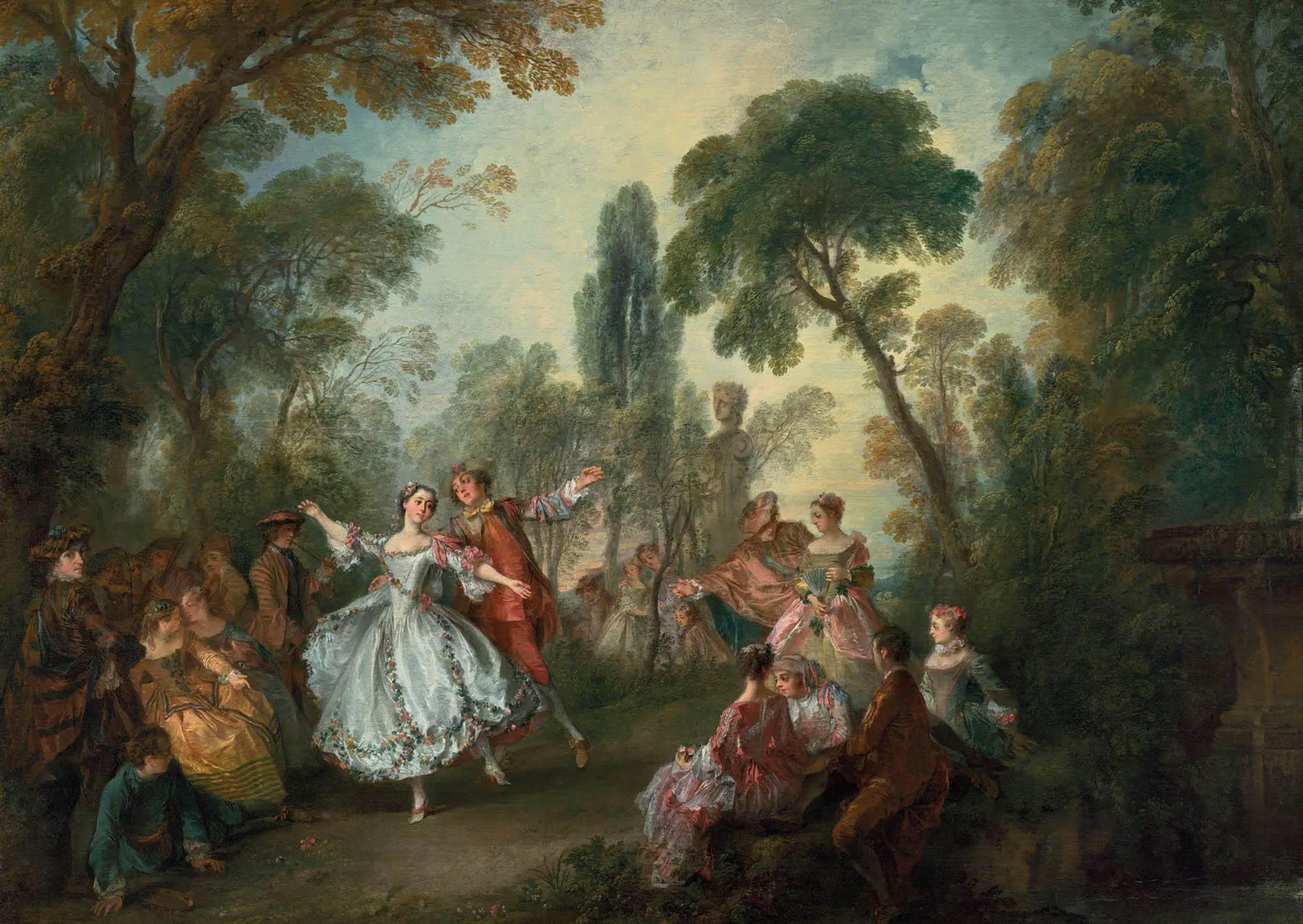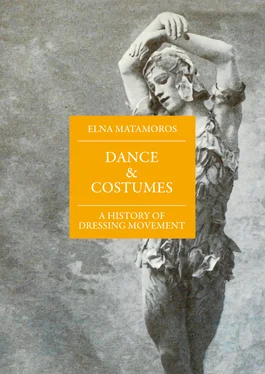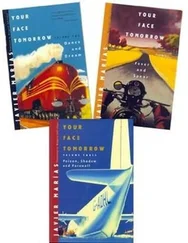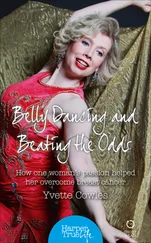Elna Matamoros - Dance and Costumes
Здесь есть возможность читать онлайн «Elna Matamoros - Dance and Costumes» — ознакомительный отрывок электронной книги совершенно бесплатно, а после прочтения отрывка купить полную версию. В некоторых случаях можно слушать аудио, скачать через торрент в формате fb2 и присутствует краткое содержание. Жанр: unrecognised, на английском языке. Описание произведения, (предисловие) а так же отзывы посетителей доступны на портале библиотеки ЛибКат.
- Название:Dance and Costumes
- Автор:
- Жанр:
- Год:неизвестен
- ISBN:нет данных
- Рейтинг книги:5 / 5. Голосов: 1
-
Избранное:Добавить в избранное
- Отзывы:
-
Ваша оценка:
- 100
- 1
- 2
- 3
- 4
- 5
Dance and Costumes: краткое содержание, описание и аннотация
Предлагаем к чтению аннотацию, описание, краткое содержание или предисловие (зависит от того, что написал сам автор книги «Dance and Costumes»). Если вы не нашли необходимую информацию о книге — напишите в комментариях, мы постараемся отыскать её.
The series offers a platform for the publication of texts, images, or digital media emerging from research on, for, or through the performative arts or film.
The series contributes to promoting practice-based art research beyond the ephemeral event and the isolated monograph, to reporting intermediate research findings, and to opening up comparative perspectives.
www.zhdk.ch/forschung/ipf
Dance and Costumes — читать онлайн ознакомительный отрывок
Ниже представлен текст книги, разбитый по страницам. Система сохранения места последней прочитанной страницы, позволяет с удобством читать онлайн бесплатно книгу «Dance and Costumes», без необходимости каждый раз заново искать на чём Вы остановились. Поставьте закладку, и сможете в любой момент перейти на страницу, на которой закончили чтение.
Интервал:
Закладка:
The choreography that Prévost, La Camargo’s teacher, had prepared for her debut in the ballet Les Caractères de la Danse 32included jetés battus and pas de basque . 33To what extent the audience could appreciate her choreographic evolutions is still uncertain. Nicolas Lancret (1690-1743) painted La Camargo several times, 34around 1730; in all his paintings that have been conserved, La Camargo performs the same movement wearing very similar dresses and the dancer depicted in an atmosphere of fête galante –or a festive country gathering– appears to be surrounded by more or less musicians, depending on the type of painting. The portraits show with great detail the cut, the fabrics and even the adornments of the dress; 35we can appreciate a costume in the fashion of the moment, with a wide pannier that, although it allowed some freedom of movements inside the skirt, surely impeded the visibility of the legs from the audience.
The pannier, 36a kind of hollow frame that was placed under the dress to give volume to the skirt, was the return of hoops, 37but the truth is that it added a baroque image to the dance that choreographers would know how to take advantage of, even if its use made it difficult for the dancers to move. Supposing that La Camargo could really perform jetés battus –and assuming that her crossing of the battus was made from the ankles, and not from the thigh, as it is currently performed– it would be difficult for her not to hook the top foot with the bottom of the skirt. The jeté battu ends with a foot sur le cou de pied 38instead of landing on two feet, like the other entrechats cited at the time, including the entrechat-quatre or entrechat-six that made her famous. An added difficulty, no doubt, but if we think of the effect that the flight of the dress must have had, that is, the petticoat –always worn between the structure and the dress– and pannier, surely we will understand the reason for the profusion of small jumps in the choreographies of those days. The delayed descent of the dress after the dancer’s landing from the jump, added to the lightness of the fabrics, would have created a candid, agile and prodigious vision to the movement.

2.3 - La Camargo Dancing . Oil on canvas by Nicolas Lancret, ca. 1730.
It is more complicated to know exactly how she performed the other step referred to in the chronicle of her performance, 39the pas de basque . In the absence of a precise description of how the pas de basque was performed, we have to rely on the technical manuals from these days: August Bournonville explained this step in his Études Chorégraphiques ; 40considering the ballet training received by Bournonville from his father and teacher, Antoine Bournonville, pupil himself of the famous danseur Noverre in France, we can assume that Bournonville’s pas de basque was similar to the movement performed by la Camargo in her professional debut, on May 5, 1726 at the Académie royale de musique . 41According to Bournonville, to perform the pas de basque the legs are thrown forward during the take-off of the jump, then the dancer must draw –in the vertical plane– successive circles, and conclude when the dancer lands on the floor. 42A very spectacular movement when interpreted by a man, and which was widely used by women up to the first part of Romanticism due to the beautiful flight that it created in the skirt of the dancer. However, the pas de basque could cause more than one problem to a dancer who performed it without her safety bloomers 43under the pannier.
What is certain is that the audacity of La Camargo –and some of her contemporaries– in shortening her skirts above the ankles opened up a whole world of technical possibilities for choreographers and dancers, who stopped being mere puppets to their male partners. Their clothing now allowed the audience to see their evolutions on stage because of the greater comfort in the joints of their legs. How much La Camargo shortened the length of her skirts, is difficult to prove; we can calculate, from Lancret’s paintings, that the hems were cut at least 10 centimetres, since in the arabesque 44performed by La Camargo the ankle of her supporting leg –Camargo’s right leg– is completely visible and the beginning of the calf appears under the skirt; from the lifted leg –Camargo’s left leg– we can even see the lower part of her knee appearing under the dress, since the flared skirt lifts up together with her leg. Also, by the flounce of what looks like an overskirt or ‘mantua’ (presumably made of fine brocade silk) one can suppose that there was a small turn towards the right, which could correspond to a slight piqué en tournant , which would be linked to another travelling step. This dress design pictured by Lancret was very popular in the fashion of the time: it was open at the front, with an inverted ‘V’ cut shape which showed the petticoat underneath, sometimes equally as decorated or even more than the dress itself. Undoubtedly, the movement of this overskirt was a determining factor so that the choreographer could include slow turning steps that would add light movement to the upper layers of the dress, but not fast enough to let the frills be lifted and show more than strictly necessary.
We should not overlook the fact that at that time the women’s fashion entered fully into the dictatorship of corsets and bodices. Although the most critical point of women’s underwear would be reached almost a century later –when the tightness of the bodice went to unhealthy maximums– a radical aesthetic change was happening in Europe and the new search for a different point of attention in the female body had started: if during the 17 thcentury the most admired part of the woman had been the bust and fashion emphasized the cleavage, now the attention was focused on the lower half of the body. 45In the 18 thcentury, dresses showed some gathering of the fabric around the waist, which was accentuated by the enormity of the pannier. It seems probable that under the dress worn by La Camargo in Lancret’s oil painting, the dancer wore a strapless bodice as was usual at the time, 46barely held by the ribbons that supported both sides of the garment, and would probably be free of the sophisticated and cruel bones –whale bones or stays that, arranged vertically, would give consistency to the bodice, keeping the sides of the woman in a still position– facilitating the inclinations of the torso, characteristic of the choreographies of those days.
Although the neckline and the armhole of the dress do not seem to prevent the rotation of the shoulders, they could surely limit the elevation of the arms, because the fabric –obviously not elastic at the time; the synthetic fibres that would allow the fabric to stretch were not invented yet– does not seem to have the traditional sleeve design of most stage costumes of today. Over the years and as more technical acrobatics were performed to dazzle the audience, stage costume designers started to solve the discomfort of street clothes for dancing. Nowadays, some cutting techniques facilitate the movement of the arms allowing the dancer to raise the arm above the head without lifting up the jacket or bodice, or tugging at the waistline.
Some costume-shops or designers add a small rhombus-shaped piece right at the bottom of the seam between the sleeve and the garment side seam, under the dancer’s armpits. 47The technique used in the costume-shop at the Mariinsky Theatre is different, but it also solves the problem: the arch corresponding to the cut of the armpit changes direction in the pattern of the sleeve, so that it has a few extra centimetres of fabric that prevents the jacket from pulling upwards when the arm is raised. 48This detail, simple but convenient, facilitates the movement performed by the dancer’s torso, giving greater freedom to the choreographer to incorporate any kind of port de bras 49in his/her creation. In the past, part of the seam under the armhole was left open, so the limb could be raised as much as with the rhombus-shaped cut. This technique, however, had the disadvantage of showing the dancer’s own armpit –or the garment they wore underneath, which could be a shirt under the jacket– when he/she moved his/her arm upwards. It seems logical to think that La Camargo would barely raise her arms above her chin, thus maintaining the prudence and modesty that corresponded to the dancing of the time.
Читать дальшеИнтервал:
Закладка:
Похожие книги на «Dance and Costumes»
Представляем Вашему вниманию похожие книги на «Dance and Costumes» списком для выбора. Мы отобрали схожую по названию и смыслу литературу в надежде предоставить читателям больше вариантов отыскать новые, интересные, ещё непрочитанные произведения.
Обсуждение, отзывы о книге «Dance and Costumes» и просто собственные мнения читателей. Оставьте ваши комментарии, напишите, что Вы думаете о произведении, его смысле или главных героях. Укажите что конкретно понравилось, а что нет, и почему Вы так считаете.












